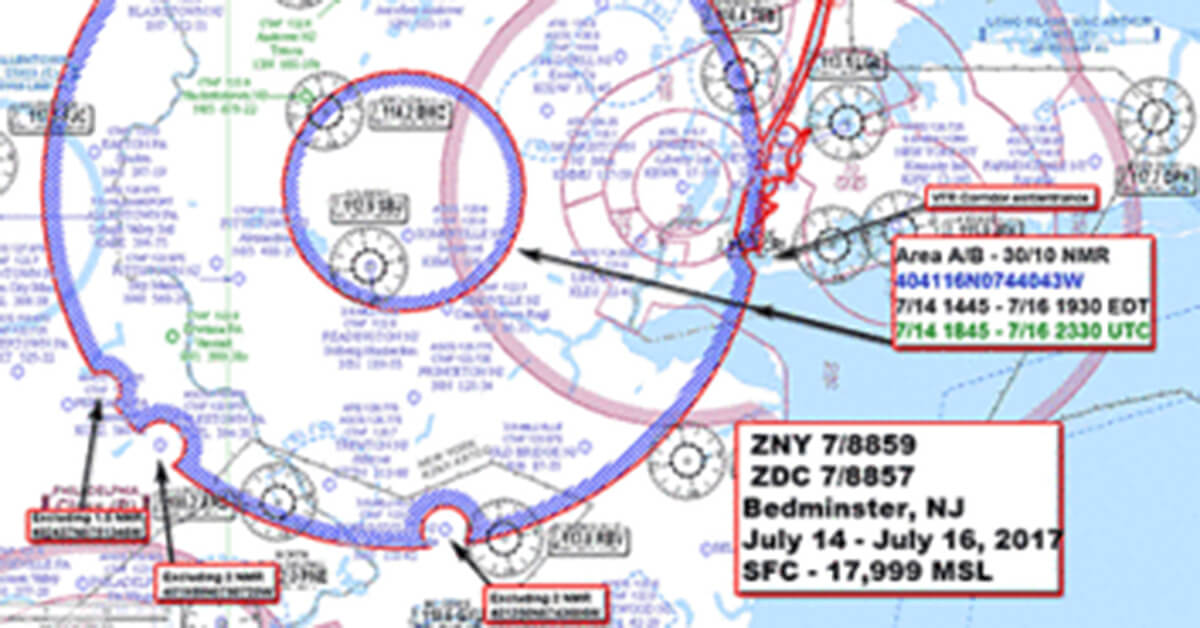
Aug. 2, 2017
With a TFR in place most of August over President Donald Trump’s residence in Bedminster, NJ, NBAA has requested that the FAA develop additional supplementary routes in and out of the New York City area when weather or traffic volume impedes the flow of traffic. The TFR runs from Aug. 4-20.
Most TFRs affect airports, said Dean Snell, manager of NBAA Air Traffic Services. “This one is primarily an airspace problem because it shuts down many of route options in and out of New York City. It’s like a six-lane freeway with construction closing the center three lanes. Weather can then slow or shut down the outside lanes.
“When thunderstorms blocked the northern departure fixes earlier this summer, we had three-to-four-hour departure delays out of Teterboro Airport (TEB),” he added.
All airways out of New York are associated with one of the departure fixes or gates, said Snell, but the TFR closes the west gates out of Newark Liberty International Airport (EWR) and the Newark satellites, which include TEB and Morristown Airport (MMU). Out of Westchester County Airport (HPN) and LaGuardia Airport (LGA), all west departure fixes are closed except NEWEL.
The TFR also shuts down the JAIKE THREE RNAV arrival into Teterboro, Morristown and Essex County Airport (CDW), because it pierces the 10-mile inner ring of the TFR.
To get around the TFR, business aviation operators will have to file routes provided by the FAA ATC Command Center, which will be released daily in flight advisories.
“It is typically difficult to allow westbound departures to head south out of New York because Washington Center has problems turning aircraft west in its airspace due to the volume of north-south traffic,” Snell said.
Following up on NBAA’s request for additional routes, the FAA told Snell it was looking at and working on the details of using more low-level routes. SERMN routes head north, east, and south, and cap out between 6,000 and 8,000 feet, he explained.
“The south route is to get traffic out of New York to Washington Center,” Snell said. If the FAA ultimately employs these low-level routes, it will be when weather and/or traffic volume are constraining the system.
View NBAA’s Airspace/Airport Alerts page for details.


 International Business Aviation Council Ltd.
International Business Aviation Council Ltd.